Global Forest Fund
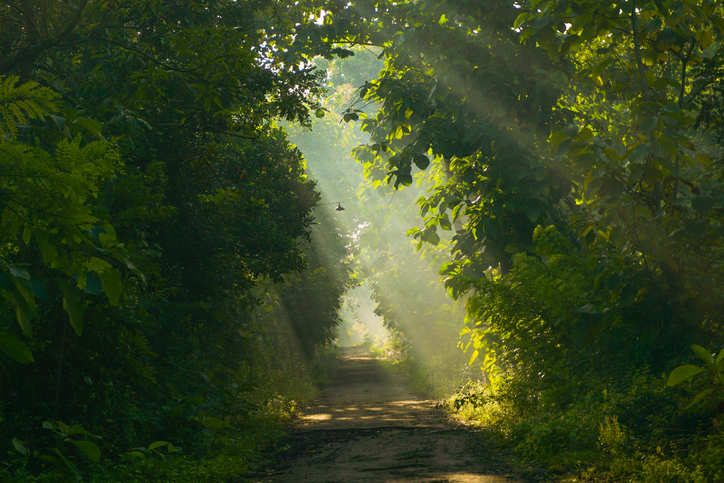
- 29 Sep 2025
In News:
- Brazil is set to become the first country to invest in the Tropical Forests Forever Facility (TFFF) — a multilateral fund designed to support long-term tropical forest conservation.
- The announcement is expected to be made at the United Nations headquarters in New York, marking a major step toward reshaping global climate finance ahead of COP30, which Brazil will host in Belém, Amazon region, in November.
About the Tropical Forests Forever Facility (TFFF)
- Origin: Proposed by Brazil during COP28 (UAE, 2023), the TFFF aims to create a permanent, self-sustaining financial mechanism to conserve tropical forests across the globe.
- Nature: It is a global, multilateral, and endowment-style fund—the first of its kind—dedicated exclusively to protecting tropical forests and ensuring steady, performance-based payments to countries maintaining their forest cover.
- Goal: To mobilize USD 125 billion through a blended finance structure, combining sovereign and private-sector contributions.
Financial Structure and Mechanism
- Funding Model:The fund will function as a permanent endowment, investing its corpus in diversified financial portfolios that generate sustainable returns.
- The returns will finance annual stipends to participating tropical forest countries (TFCs), based on the extent of their standing forests.
- Composition of Funds:
- Sponsors (20%) – High-income countries (as per World Bank classification) and global philanthropies.
- Market Investors (80%) – Institutional investors, sovereign wealth funds, and endowments participating via debt instruments (such as green bonds).
- Fund Management: Likely to be handled by a Multilateral Development Bank (MDB) such as the World Bank, ensuring transparency and credibility.
- Initial Target:To reach the full USD 125 billion goal, Brazil plans to secure an initial USD 25 billion from governments and philanthropies, which would serve as an anchor to attract an additional USD 100 billion from private investors.
Brazil’s Role and Strategic Intent
- Brazil’s upcoming investment will make it the first contributor to the fund — signaling its confidence in the mechanism and encouraging other nations to follow suit.
- According to official sources, the investment amount will be “considerable,” intended to set a benchmark and demonstrate Brazil’s commitment to global forest conservation.
- As home to the world’s largest tropical rainforest, Brazil stands to receive significant future payouts under the TFFF, reinforcing its dual role as a beneficiary and a leader in climate stewardship.
Global Participation and Support
- Several countries have already expressed interest in joining the initiative, including China, the United Kingdom, France, Germany, Norway, Singapore, and the United Arab Emirates.
- Notably, China has conveyed its intention to contribute among the first investors — a move seen as a potential turning point in global climate finance, traditionally dominated by Western donors.
Significance
- Bridging Climate Finance Gaps:The TFFF introduces a results-based, long-term funding model for forest conservation, shifting away from short-term grants toward permanent, scalable financing.
- Shared Global Responsibility:The participation of both developed and developing nations underscores a more equitable climate finance architecture, aligning with the principle of common but differentiated responsibilities (CBDR).
- Boost to COP30 and Viksit Bharat 2047 Goals:Brazil’s leadership strengthens its position ahead of COP30 and aligns with India’s own emphasis on sustainable development and green finance under Mission LiFE and Viksit Bharat 2047 frameworks.
- Preserving Global Carbon Sinks:By rewarding countries for maintaining forests, the fund provides a direct economic incentive for protecting vital ecosystems that regulate global climate patterns.
Adi Yuva Fellowship & Adi Karmayogi Volunteers Programme
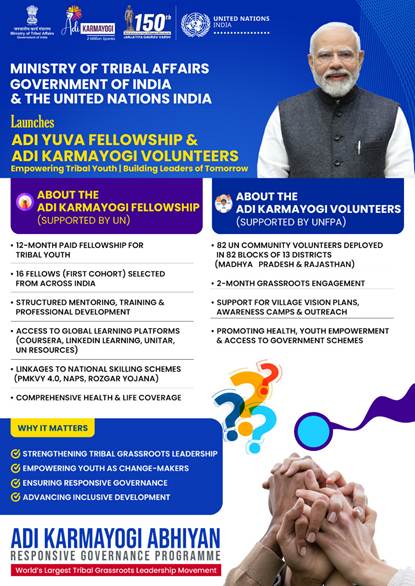
- 29 Sep 2025
In News:
- The Ministry of Tribal Affairs (MoTA), in partnership with the United Nations in India, has launched the Adi Yuva Fellowship and the Adi Karmayogi Volunteers Programme under the umbrella of the Adi Karmayogi Abhiyan — a flagship initiative envisioned as the world’s largest tribal grassroots leadership movement.
- These initiatives aim to empower tribal youth, strengthen grassroots governance, and promote inclusive development in alignment with the goals of Viksit Bharat 2047 and the 2030 Agenda for Sustainable Development.
About Adi Karmayogi Abhiyan
- Coverage: Targets 11 crore citizens across 1 lakh tribal-dominated villages in 550 districts of 30 States and UTs.
- Objective: To transform governance into a people’s movement rooted in responsive, accountable, and citizen-centric administration.
- The ongoing Adi SewaParv (17 September – 2 October 2025) focuses on preparing Tribal Village Vision 2030 Action Plans through community–government collaboration.
1. Adi Yuva Fellowship
Overview
The Adi Yuva Fellowship, supported by UN India, is a first-of-its-kind national programme designed to nurture tribal youth leadership through structured learning, mentorship, and professional development.
Key Features
- Duration: 12-month paid fellowship with a tailored learning plan combining knowledge-building, on-the-job training, and reflective practice.
- Support Package: Monthly allowances, comprehensive health and life insurance, and access to UN and commercial learning platforms.
- Skill Linkages: Fellows will be connected to national employability schemes such as:
- Pradhan Mantri Kaushal Vikas Yojana (PMKVY) 4.0
- National Apprenticeship Promotion Scheme (NAPS)
- PM Viksit Bharat Rozgar Yojana
- Mentorship and Exposure: Fellows will receive structured mentorship, engage in peer learning, and gain exposure to national and international platforms.
- Deployment: The first batch of 16 Fellows will be selected through a competitive process and placed with UN agencies at national, state, and district levels.
Objective
To build a cadre of empowered tribal youth who can contribute to governance, entrepreneurship, innovation, and community-led development, ensuring that tribal voices shape India’s growth story.
2. Adi Karmayogi Volunteers Programme
Overview
Supported by the United Nations Population Fund (UNFPA), the Adi Karmayogi Volunteers Programme is aimed at strengthening last-mile service delivery and promoting community participation in tribal regions.
Key Features
- Deployment:
- 82 Adi Karmayogi Volunteers (UN Community Volunteers) deployed across 82 blocks in 13 districts of Madhya Pradesh and Rajasthan.
- They will engage in anintensive two-month grassroots programme.
- Role and Activities:
- Support preparation of Village Vision 2030 Action Plans.
- Conduct awareness campaigns, outreach drives, and capacity-building sessions.
- Facilitate improved access to government schemes and services.
- Outcome: Strengthen inclusive governance, local participation, and service delivery at the village level.
Significance of the Initiatives
1. Empowering Tribal Youth
- Provides structured opportunities for skill enhancement, leadership, and employability.
- Bridges the gap between education, governance, and community development.
2. Strengthening Governance
- Promotes citizen-centric and participatory governance in tribal regions.
- Empowers communities to actively contribute to their own development vision.
3. Advancing India–UN Partnership
- Demonstrates India’s collaborative approach towards achieving the Sustainable Development Goals (SDGs).
- Highlights the One UN approach for inclusive and sustainable growth.
India’s first overseas defence manufacturing facility
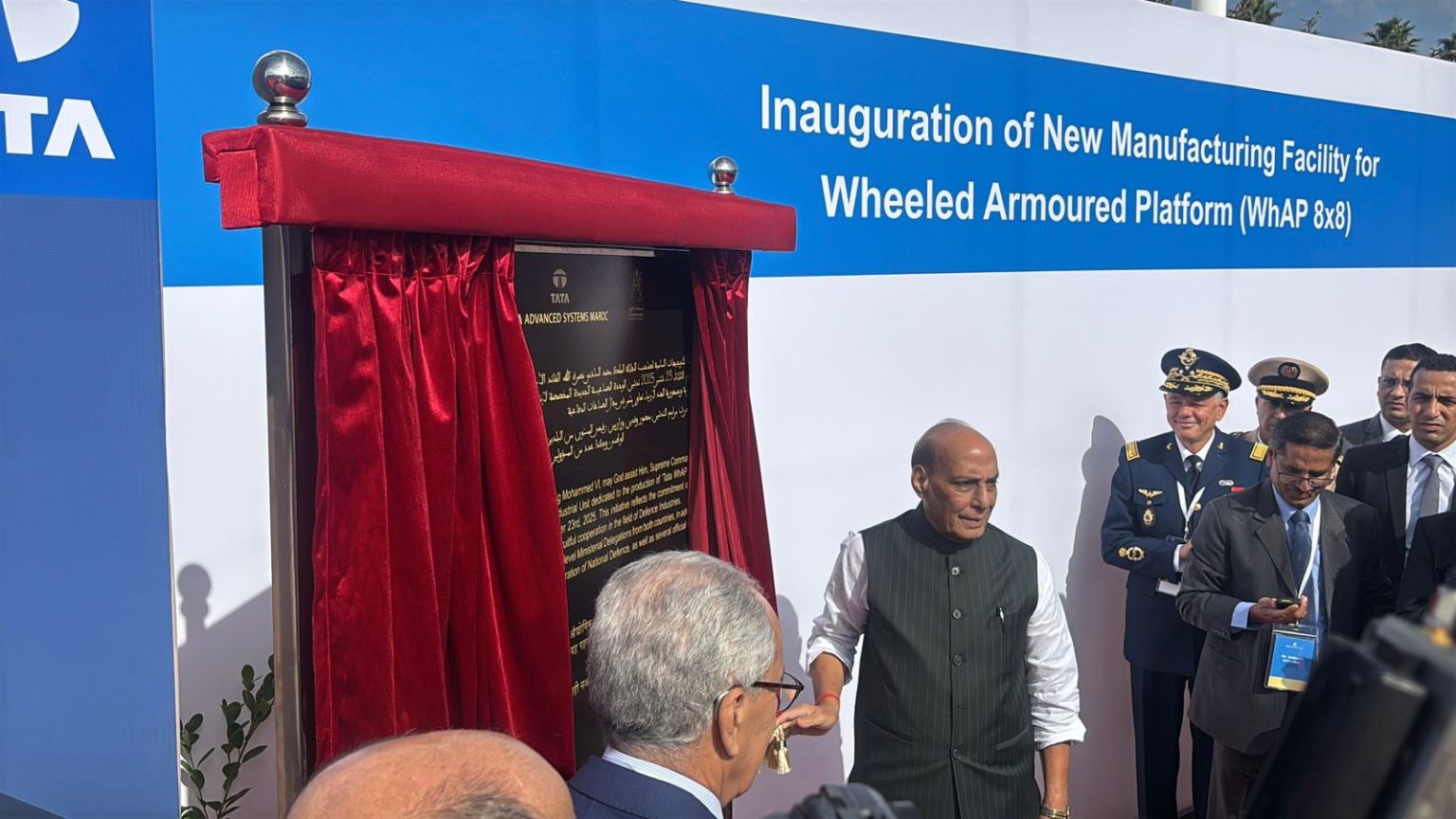
- 29 Sep 2025
In News
- In a major step towards expanding India’s defence industrial footprint globally, Defence Minister Rajnath Singh and his Moroccan counterpart AbdelatifLoudyi jointly inaugurated India’s first overseas defence manufacturing facilityatBerrechid, Morocco.
- Set up by Tata Advanced Systems Limited (TASL) in collaboration with the Defence Research and Development Organisation (DRDO), the facility marks a historic milestone in India’s defence diplomacy and the growing strategic partnership between India and Morocco.
About the Facility
- Location:Berrechid, Morocco
- Established by: Tata Advanced Systems Limited (TASL) in partnership with DRDO
- Launched in: 2025
- Scale: Spread over 20,000 sq. metres, it is Morocco’s largest defence manufacturing facility and India’s first such overseas plant by a private defence company in Africa.
- Primary Production: The Wheeled Armoured Platform (WhAP) — an indigenously developed 8×8 modular combat vehicle jointly designed by TASL and DRDO.
Key Features
- Product Range: The WhAP will be produced in multiple configurations including:
- Infantry Fighting Vehicle
- Armoured Personnel Carrier
- Reconnaissance Vehicle
- Command Post
- Mortar Carrier
- Armoured Ambulance
- Technical Capabilities:
- Equipped with advanced mobility, armour protection, remote weapon stations, and anti-tank guided missile systems.
- Incorporates indigenous technologies and customised modular design for varied combat roles.
- Local Sourcing:
- Initially, one-third of components will be sourced locally from Morocco.
- This is expected to increase to 50% in later phases, fostering industrial collaboration and technology transfer.
Strategic Objectives
The facility aims to advance India’s Aatmanirbhar Bharat vision beyond domestic production to global partnerships under the theme “Make with Friends, Make for the World.”
Key Goals:
- Strengthen India–Morocco defence cooperation and bilateral industrial partnerships.
- Promote defence exports and technology sharing with friendly nations.
- Support regional security and stability across Africa and Europe through capacity-building.
Significance
1. Strategic and Diplomatic
- Establishes Morocco as a strategic hub for Indian defence manufacturing in North Africa and Europe.
- Deepens India’s defence diplomacy and enhances its global footprint in high-technology sectors.
- Reinforces India’s credibility as a trusted partner in defence collaboration.
2. Economic and Industrial
- Generates direct and indirect employment in Morocco.
- Develops a local supplier ecosystem and supports critical technology capabilities within the host nation.
- Boosts India’s defence exports while contributing to Morocco’s industrial development.
3. Technological and Strategic Autonomy
- Demonstrates India’s growing capability to design, produce, and export advanced defence systems.
- Showcases India’s transition from import dependence to a global exporter of high-end military technologies.
World Food India (WFI) 2025
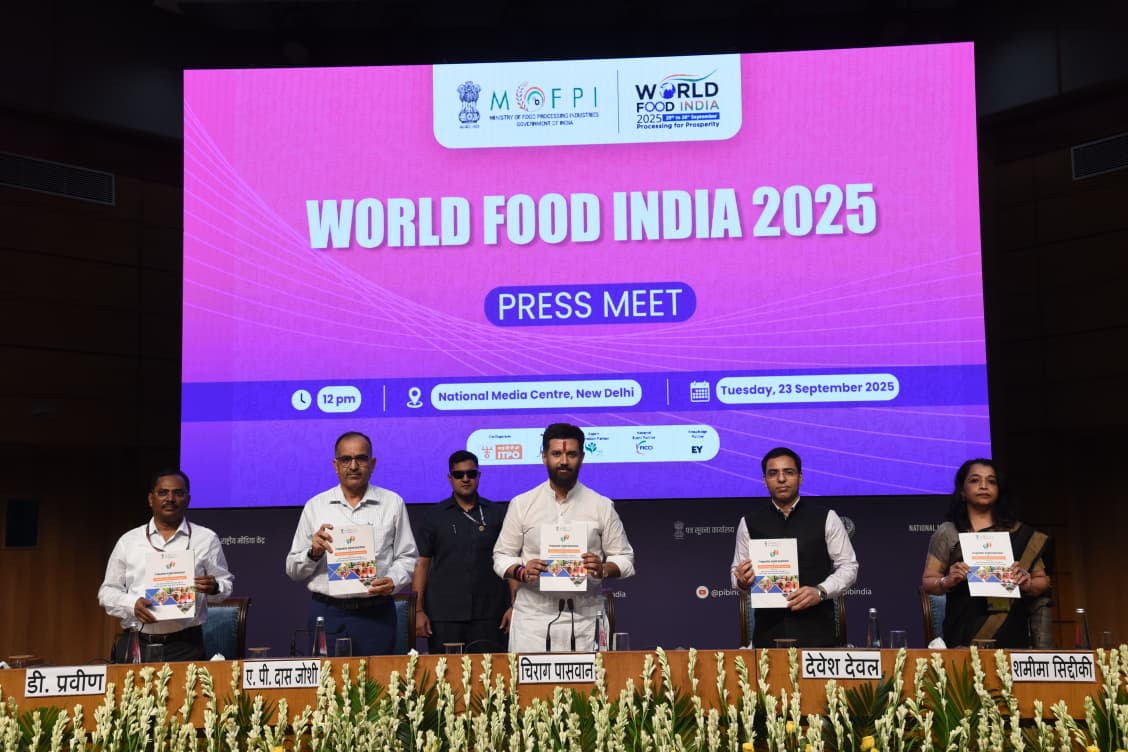
- 29 Sep 2025
In News:
The fourth edition of World Food India (WFI) 2025was held at Bharat Mandapam, New Delhi, organised by the Ministry of Food Processing Industries (MoFPI).
Overview
World Food India is the flagship global event of MoFPI that brings together key stakeholders from across the food ecosystem — governments, industry leaders, investors, and innovators — to strengthen India’s positioning as the “Food Basket of the World.”
Since its inception in 2017, the event has evolved into a transformative platform for food innovation, investment, and sustainability. The 2025 edition, spread across 1,00,000 sq. metres, is the largest congregation in the history of India’s food processing sector, with participation from:
- 21 countries, 21 States/UTs, 10 Central Ministries, and 5 allied organisations
- Over 1,700 exhibitors, 500 international buyers, and representatives from 100+ nations
Key Highlights of World Food India 2025
Partner and Focus Countries
- Partner Countries: New Zealand and Saudi Arabia
- Focus Countries: Japan, Russia, UAE, and Vietnam
Parallel and Thematic Events
- 3rd Global Food Regulators Summit (FSSAI): To harmonise international food safety standards.
- 24th India International Seafood Show (SEAI): To promote India’s seafood export potential.
- Reverse Buyer–Seller Meet (APEDA): Featuring over 1,000 buyers to boost agri-food exports.
- Knowledge Sessions: 45+ conferences, thematic discussions, and CXO roundtables with 100+ global agri-food leaders.
- Special Pavilions: Dedicated spaces for States, Ministries, Pet Food, Technology, Startups, and International exhibitors.
Core Pillars of WFI 2025
The 2025 edition revolves around five strategic pillars reflecting the government’s holistic vision for the food processing sector:
- Sustainability and Net Zero Food Processing – promoting climate-resilient and energy-efficient processing systems.
- India as a Global Food Processing Hub – showcasing India’s vast agri-resource base and processing potential.
- Frontiers in Food Processing, Products, and Packaging Technologies – highlighting innovation and technology adoption.
- Food for Nutrition, Health, and Wellness – aligning with the goals of nutritional security and public health.
- Livestock and Marine Products Driving the Rural Economy – boosting rural livelihoods and export competitiveness.
Significance of World Food India 2025
Economic Impact
- Attracts global and domestic investment in R&D, startups, logistics, and cold chain infrastructure.
- Enhances farm-to-fork linkages and promotes value addition across the supply chain.
Strategic Importance
- Reinforces India’s commitment to sustainable food systems in line with the UN Sustainable Development Goals (SDGs).
- Fosters international collaboration in technology, innovation, and regulatory frameworks.
Global Positioning
- Projects India as a leader in food innovation, safety, and sustainability.
- Strengthens India’s image as a trusted global supplier of high-quality, nutritious, and sustainable food products.
Exercise Cold Start
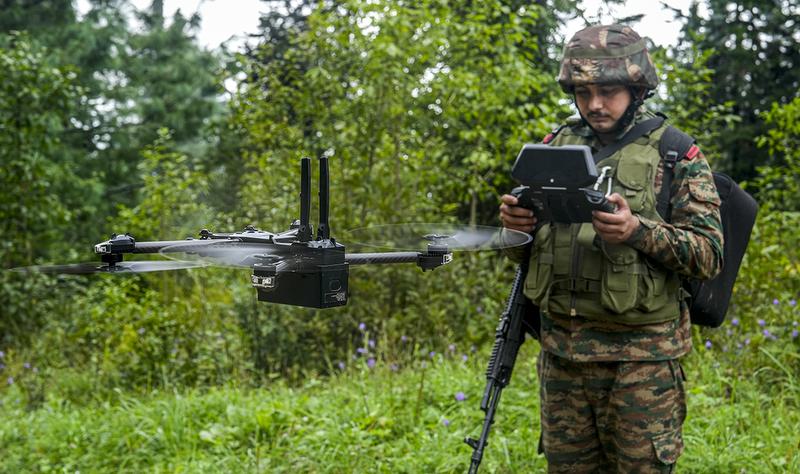
- 29 Sep 2025
In News:
- India will conduct a major tri-service exercise, ‘Cold Start’, in the first week of October 2025 in Madhya Pradesh.
- The exercise, involving the Army, Navy, and Air Force, will focus on testing drones and counter-drone systems to strengthen the country’s integrated air defence capabilities.
- It is being described as the largest such joint drill since Operation Sindoor.
About Exercise Cold Start
- Nature: A tri-service military exercise designed to simulate aerial threats and defence responses using drones, UAVs, and counter-drone systems.
- Objective:
- To evaluate operational readiness of the armed forces against evolving aerial threats.
- To identify technological and procedural gaps in India’s air defence systems.
- To enhance interoperability and coordination between the three defence services.
- Participants:
- Indian Army, Navy, and Air Force as primary participants.
- Supported by industry partners, research and development (R&D) agencies, and academic institutions, fostering a military–industry–academia partnership.
Key Features
- Live demonstrations of drones and counter-drone systems.
- Integration of GPS jamming, electronic warfare, and surveillance technologies.
- Testing of indigenous technologies developed through collaboration between defence R&D and private industry.
- Conceptual inspiration: The integrated air defence approach draws from the Sudarshan Chakra—symbolising a seamless and multi-layered defensive network against drones, UAVs, and hypersonic weapons.
Significance
- Enhances Jointness: Promotes synergy among the three defence services in technology-driven warfare.
- Technological Edge: Strengthens India’s counter-drone warfare capabilities and electronic warfare resilience.
- Strategic Readiness: Demonstrates India’s preparedness to respond to emerging aerial and cyber threats in the evolving domain of modern warfare.
- Defence Innovation: Encourages indigenous R&D and strengthens public–private collaboration in developing next-generation air defence systems.
